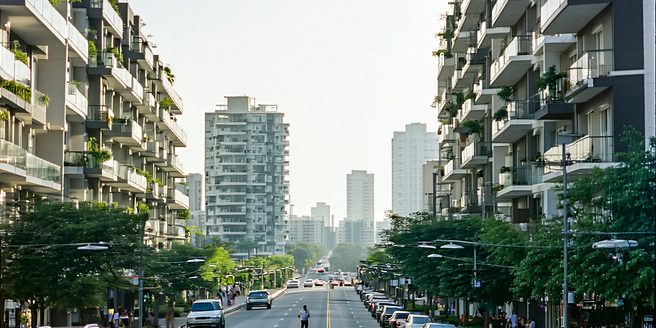Rent Trends In Gentrifying Neighborhoods

Understanding Gentrification and Its Impact on Rent Prices
Gentrification refers to the transformation of neighborhoods by wealthier individuals moving in, resulting in increased property values and rent prices. As wealthier populations relocate to urban areas, local amenities and infrastructure often see improvement, attracting more investment. However, this economic influx can displace long-time, lower-income residents who can no longer afford rising rents. It is important for city planners to implement strategies that mitigate these negative effects while fostering growth. Balancing development and community preservation is a complex task that requires thoughtful planning and policy. Gentrification is a double-edged sword: while it can lead to revitalized communities, it also risks erasing cultural diversity and tightening housing markets, making it more challenging for residents to find affordable housing.
Factors Contributing to Rising Rents
Multiple factors contribute to rising rent prices beyond gentrification. Limited housing supply, increased demand, and economic growth play crucial roles. Inflation and rising costs of living also drive rents up, as landlords aim to cover their costs and maintain profit margins. Urbanization trends and migration shifts lead to higher demand in certain areas, putting pressure on the housing stock. Moreover, a lack of affordable housing options exacerbates the situation for many renters. Additionally, policy decisions, such as zoning laws and rent control, can impact the pace and scale of rent increases. These economic and social dynamics can vary significantly from one region to another, complicating the issue further. Understanding these factors helps in addressing the complex issue of rising rents.
Comparing Rent Trends Across Different Cities
Rent trends vary significantly across different cities due to regional economic conditions, population growth, and housing policies. In cities experiencing rapid development, like San Francisco or New York, rents tend to be higher and increase swiftly. This situation often leaves renters facing tough decisions about budget and lifestyle. Additionally, the demand for housing often outpaces supply in such areas, further exacerbating rent increases. Conversely, cities with slower economic growth might have more stable rent prices. Comparing these trends provides insight into how local economies and regulatory environments affect housing markets. Renters must consider these dynamics when relocating, as comparing different cities can highlight opportunities for more affordable living or predict potential rent spikes.
How Gentrification Affects Long-Time Residents
Gentrification often significantly impacts long-time residents, particularly those from lower-income backgrounds. As property values and living costs rise, these residents may find themselves priced out of their communities. The influx of wealthier individuals can lead to cultural shifts, altering the neighborhood’s identity and creating social tension. This transformation can sometimes erode the sense of belonging felt by the original inhabitants. Small local businesses may also struggle to survive amidst the changing economic landscape. Public awareness and community engagement are crucial in tackling these issues effectively. This displacement risks breaking community ties and continuity for families who have lived there for generations. Addressing these challenges requires targeted policies to balance development and displacement, ensuring that long-time residents can remain and thrive in their neighborhoods.
Strategies for Finding Affordable Housing in Gentrifying Areas
Finding affordable housing in gentrifying areas requires strategic planning and thorough research. Prospective renters should explore neighborhoods on the cusp of gentrification, where rents might still be manageable. It’s essential to stay updated on market trends and rental forecasts. Additionally, attending local town hall meetings can provide valuable information about any upcoming developments that might affect housing costs. Engage with local housing authorities and nonprofits to learn about subsidies or assistance programs available to residents. Consider negotiating lease terms and researching smaller, private landlords who may offer competitive rates. Joining community groups can also provide insight and resources for locating affordable housing options. Being proactive and informed are key strategies for securing affordable living spaces amid gentrification pressures.